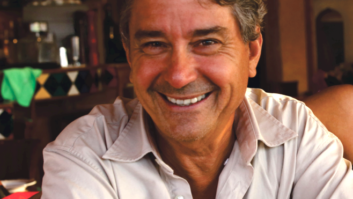 Whether you offer a product or service, simply putting up a shingle outside your door is no way to ensure success. Just look at the restaurant industry: Some estimates suggest that four out of five restaurants fail within the first year, and about the same ratio persists over the next five years. To succeed, you must lay out a plan and work it hard. In my mind, there is no other way.
Whether you offer a product or service, simply putting up a shingle outside your door is no way to ensure success. Just look at the restaurant industry: Some estimates suggest that four out of five restaurants fail within the first year, and about the same ratio persists over the next five years. To succeed, you must lay out a plan and work it hard. In my mind, there is no other way.
Radial’s original name was Cabletek. We were like a baby Whirlwind, building guitar and mic cables, concert snakes and custom patchbays for studios. Around February 1992, I put together price lists and catalogs detailing the various products and services we offered and mailed them out to every music store, sound company and professional studio in Canada. Then we waited.
I told my partner at the time that we had to be patient, and we had to work the plan. We waited and we waited some more. Nothing happened.
I recall going to dinner that March, sitting around a table, feeling disillusioned that all of our marketing efforts had been for naught. Then suddenly the fax machine began to light up and sales went from nothing to $15,000 in April and grew steadily from there. Sound companies began to prep for concert season, studios planned rewiring or expansion during the slow summer months, and the brands we were pushing began to take hold at retail. We got busy and our world started to change.
The problem with the Cabletek brand was that it pigeonholed the company. By this point, we had taken on distribution for a number of non-cable products. I remember visiting a shop in Montreal, trying to sell them microphones, acoustic panels and power amplifiers, and the buyer was confused. He asked, “Why is a cable company trying to sell all this other stuff?” Message received! I changed the company name to C-Tec and created Radial as our in-house cable brand.
In 1996, after we launched the first generation Radial JDI direct box, we were approached by bassist Mark Egan, who had gained acclaim for playing bass with Pat Metheny and Sting. He had heard about Radial from Bruce Springsteen, who had been using it on tour with the first major rental company to buy our products, Audio Analysts (later acquired by Solotech). Mark was the first artist to endorse Radial.
As part of our marketing campaign, we created a document called the Green Report that compared several concert-quality direct boxes, which we felt proved the Radial JDI was superior. With the report and a few endorsements in hand, I proceeded to visit Clair Brothers to see if I could get them to invest. I met Stan Horine, the buyer, and gave him my best sales pitch. Afterward, I asked him what he thought of the JDI. He said it looked excellent. I then asked how many he would like; he said none. I asked, “Why? It is made better, sounds better and solves noise problems. Why not get some?” He said, “We are a rental company. If people ask for your products, we will order them.”
The Aha Moment was clear: We had to create demand.
The first thing we did was decide where to focus our energy. We began in Nashville—not only was it the center of the country music world, it was beginning to gain attention as a great place for music production for all musical genres, attracting bands to rehearse and record. We met with the folks at various rehearsal studios and arranged to have our Radial DIs on hand for evaluation during rehearsals. Next thing you know, Radial DIs began to show up on riders. Eventually, Clair began to order them.
Yesterday, I was paging through my wife’s recent copy of Vanity Fair magazine and could not fail to notice all the ads. Billion-dollar multinationals spending bucket-loads to get their brands in front of as many eyes as possible. And what do they do? They attach big names like Brad Pitt and Charlize Theron to their brands to create an association that the consumer will believe and trust. I have always been a huge proponent of advertising. However, getting big-name artists like Sting or Bruno Mars to endorse a direct box is most assuredly not in the cards. Heck, most of these big-name players probably don’t even know what a direct box is!
Instead, I chose to target big-name engineers and use their association with certain artists to gain market credibility. It wasn’t long until we had built up relationships with a number of live and studio engineers, culminating in Al Schmitt, arguably the most successful recording engineer of all time, accepting a TEC Award on our behalf.
Radial ads featured a mix of artists and engineers from various musical backgrounds. My feeling was that we did not want Radial to be pigeonholed as a DI for bass or country music. There were usually seven artists featured along the left-hand banner, and I would show a variety of products in each ad. At the end of each year, I ran a “thank you” ad that featured a laundry list of artists that used Radial on tour. By creating a sense of community, we also created a winning team—and everyone wants to be part of a winning team.







